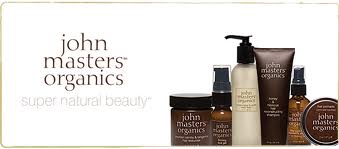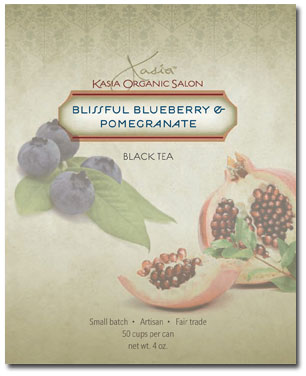Despite great advances in medicine, complex chronic diseases prevail. Environment and lifestyle are contributing factors to this state of health.1 The Chronic Disease Epidemic Model, depicted on page 36, illustrates the most common disease influences.
The allopathic medical model focuses on treatment of symptoms and emphasizes acute episodic care. Over time, addressing only the symptoms - rather than the root causes - may permit chronic disease to continue. Functional medicine offers additional scientific tools to uncover the source of disease.
Background
The term "functional medicine" was coined in 1993 by nutritionist Jeffrey Bland, PhD, to describe the integrated medicine of the future. The tenets of functional medicine were formed at the turn of the 20thcentury, when Sir Archibald Garrod observed that innate errors of metabolism could be dietetically modified.2 The philosophy behind functional medicine grew out of naturopathic medicine. Naturopathy seeks to support the body's ability to heal itself through dietary and lifestyle changes in combination with complementary and alternative medicine therapies.3 Naturopathic medicine once prospered in the United States, but the discovery of new medications and surgical techniques, along with political and social changes, led to its decline.4 Research interest in natural healing continued, and one of the end results was functional medicine.
Functional medicine links years of research in the basic sciences with emerging options in clinical care to offer safe, effective treatment of complex chronic medical conditions.4 It goes back to the basics of evaluating organ function rather than organ pathology. Functional medicine focuses on restoring balance to a dysfunctional system by thoroughly investigating and correcting underlying imbalances.
Bridging to Today
Functional medicine represents a paradigm shift from 20thcentury medicine. In the acute care model, a symptom is evaluated, a diagnosis is made and a medication or surgical intervention is prescribed. The chronic care model (functional medicine) is more comprehensive.5 It places the patient front and center and incorporates complementary healthcare. It views each patient as a system of interconnecting unique genetic, psychosocial and pathophysiologic elements whose interactions with the environment influence health.
Functional Medicine Matrix
The Functional Medicine Matrix Model, which is incorporated in the chronic care model, is guided by three basic concepts: biochemical individuality, health as a positive sign of vitality and the homeodynamics of life processes.3 The model is an information organizing tool that allows the provider to first address clinical imbalances, physiologic processes, environmental inputs and genetic predispositions.
Although a known diagnosis is useful, disease or other imbalances can be averted by addressing functionality first. The concepts in the matrix model guide the fields of study contributing to functional medicine: genetics, gastroenterology, endocrinology, environmental toxicology, psychology, immunology, natural medicine, nutrition and herbal medicine.6
Genetic and Lifestyle Imbalances
The focus on genetic factors and lifestyle imbalances is based on scientific information showing how genes can be influenced by environment.3,7-10 Think back to nursing school: The evaluation of environmental factors and the interaction of mind, body and spirit are at the core of the nursing model. Florence Nightingale's environment theory addresses the patient's need for fresh air, pure water, sufficient food supplies, efficient drainage, cleanliness and sunlight.11
Clinical Imbalances
The use of challenge testing (e.g., stool sampling, hair analysis, saliva testing, urine testing, etc.) to identify clinical imbalances is unique to functional medicine. This approach allows providers to determine biological and physiologic function and malfunction.
The six core clinical imbalances - in hormonal activity, oxidation, detoxification, immunity, inflammation, and in digestion and absorption - focus functional medicine providers to become less concerned with naming a disease and more concerned with identifying imbalances in the body. As an example, the treatment of obesity involves more than diet, exercise management and behavioral therapy. Underlying physiologic problems, such as inflammation, hormone imbalances and genetic abnormalities, need to be addressed. In summary, functional medicine allows the provider to do the following:
• focus on the unique needs of the patient, rather than symptoms alone
• assess the body systematically, biochemically and structurally
• use combined diagnostic and challenge testing
• form a true partnership with the patient
• encourage the patient to focus on prevention.
Assessing Foundational Health
Functional medicine providers believe the root causes of complex chronic illnesses and symptoms are manifested in the environment of the gastrointestinal tract, especially the intestinal mucosa. To get to the root cause of a symptom or complaint, collect a detailed patient history and administer a subjective assessment questionnaire. The questionnaire should gather information on physical, mental and emotional status.
Objective Testing
Information on digestion, absorption, bacterial balance, yeast overgrowth, inflammation, metabolic activity and immune function can be obtained through challenge testing. Maldigestion problems are evident in symptoms such as gas, bloating, abdominal pain, diarrhea and constipation.
Chronic dysbiosis and inflammation compromise absorption, contributing to deficiencies of proteins, carbohydrates and fats. They can also reduce short-chain fatty acid levels, thus increasing a patient's risk for colon cancer and ulcerative colitis.12 Chronic maldigestion and gut irritation can lead to leaky gut and the development of food allergies, as well as bacterial or yeast overgrowth and the production of toxins.12 Toxins can worsen the irritation and enter the general circulation of the body, compromising overall health.
Functional medicine tests to evaluate systems include:
• physical assessment of nutrition status
• blood testing for food allergies and sensitivities, vitamin status, amino acid level, and oxidative stress
• hair analysis for mineral levels
• urine testing for amino acid levels and toxic elements, oxidative stress analysis
• saliva testing for hormone analysis, metabolic dysglycemia profile
• nasal, ocular or vaginal tests for yeast or bacteria.
Laboratories that conduct functional medicine testing include NeuroScience Inc., Diagnos-Techs Inc., Metametrix, Genova Diagnostics, Quest Diagnostics and Spectracell.
Laboratory and imaging evaluations
- Immune or inflammatory imbalance
- Energy imbalance, mitochondrial dysfunction
- Digestive, absorptive and microbiological imbalance
- Detoxification, biotransformation, excretory imbalance
- Imbalance in structural, boundary and membrane integrity
- Hormonal and neurotransmitter imbalances
- Imbalance in mind-body-spirit integration
Initial Assessment
- Enter data on matrix form; look for common themes
- Review underlying mechanisms of disease
- Recapitulate patient's story
- Organ system-based diagnosis
- Functional medicine assessment: underlying mechanisms of disease, genetic and environmental influences
Treatment plan
- Individualized
- Dietary, lifestyle, environment
- Nutritional, botanical, psychosocial, energetic, spiritual
- May include pharmaceuticals or procedures
Gail Provencher is a women's health nurse practitioner who owns a functional and complementary healthcare practice in Appling, Ga. For information on her practice, visit www.gailprovencher.com.
References
1. Minich DM, Bland JS. Acid-alkaline balance: role in chronic disease and detoxification. Altern Ther Health Med. 2007;13(4):62-65.
2. Bland JS. The future of nutritional pharmacology. Alternative Therapies in Health and Medicine. 2008;13(5):12-14.
3. An introduction to naturopathic medicine. National Institutes of Health. National Center for Complementary and Alternative Medicine. Available at: http://nccam.nih.gov/health/naturopathy/D372.pdf. Accessed Feb. 2, 2010.
4. Pizzorno JE, Murray MT. Textbook of Natural Medicine. 3rded. St. Louis, Mo.: Churchill Livingstone Elsevier Ltd.; 2006: 13, 21.
5. Jones DS, et al. 21sti> Century Medicine: A New Model for Medical Education and Practice. The Institute for Functional Medicine. Gig Harbor, Wash.: 2009.
6. Vasquez A. Web-like interconnections of physiological factors. Integrative Medicine. 2006;5(2):32-37.
7. Pauling L. Orthomolecular psychiatry. Varying the concentrations of substances normally present in the human body may control mental disease. Science. 1968:160(825):265-271.
8. Blum K, et al. DNA based customized nutraceutical "gene therapy" utilizing a genoscore: a hypothesized paradigm shift of a novel approach to the diagnosis, stratification, prognosis, and treatment of inflammatory process in the human. Med Hypotheses. 2006;66(5):1008-1018.
9. Williams RJ, Pelton RB. Individuality in nutrition: the genetotrophic principle. Science. 1965;148(3670):669-672.
10. Null G. The Clinician's Handbook of Natural Healing. New York, N.Y.: Kensington Publishing Corp; 2000: 682.
11. McCabe P. Naturopathy, Nightingale, and nature cure: a convergence of interests. Complement Ther Nurse Midwifery. 2000;6(1):4-8.
12. Galland L. Power Healing - Use the New Integrated Medicine to Cure Yourself. New York, N.Y.: Random House; 1998: 285-287.
















